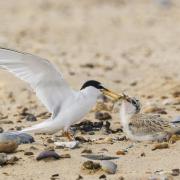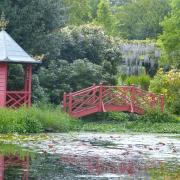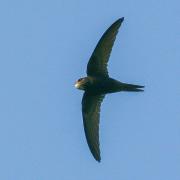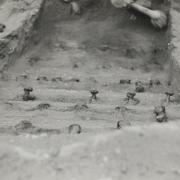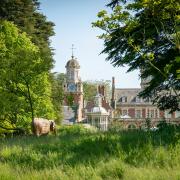Ella Broom got a degree in astro-physics but never quite settled into life in an office. Now she’s found her vocation as a Suffolk Wildlife Trust voluntary intern, trying to persuade spoonbills o breed at Hazlewood Marshes Nature Reserve.
Ella Broom took up a one-year voluntary conservation internship with Suffolk Wildlife Trust last October after a few varied career starts. 'When I left school I had no idea what I wanted to do, so I went to university to study astro-physics.' It took her a little while to realise that her real interests are a bit closer to home.
Her first job after university was a technical sales engineer, working in the fields of laser safety, optomechanics and light measurement, but after two years she’d had enough of being stuck in an office and quit. She started volunteering at Whipsnade zoo, edging her a bit closer to nature, but most of her days were spent online gaming, mostly city-building games, where she grew a live-streaming audience that eventually provided her with a regular income.
'By the end I could just about pay the rent with what I was making, but I wasn’t enjoying it anymore; the reality of being a pro-gamer was playing the games that made money rather than the ones that were fun.' So she took a part time job in Aldi, stocking shelves, which, during the pandemic, grew into a full time job. It obviously wasn’t long before Ella started to look around for a career that better aligned with her interests, and a growing desire to do something outdoors and with nature. And that’s when she came across an ad for the internship.

Suffolk Wildlife Trust offers a small number of voluntary reserve internship positions twice a year, one for each of the reserves groupings. The idea is to develop knowledge, skills and experience for interns to gain future employment in the conservation sector. Ella was awarded the position last September with the south east reserves group, under the mentorship of Rachel Norman, who herself passed through the internship scheme in 2019. Rachel is now a reserves warden at SWT, after her first conservation job at Norfolk Wildlife Trust.
One of the most interesting reserves in the south east group is Hazlewood marshes, on the Alde estuary between Snape and Aldeburgh. It’s a 64-hectare site that has also taken a few changes of direction in its time. An area of the marsh close to the current wildlife-viewing hide was once a tidal island known as Barber’s Point. Archaeological excavations at the beginning of the 20th century, then again a hundred years later, revealed a rich and complex history of human industry and occupation, dating right back to the Neolithic period, encompassing bronze age, Roman, Saxon and medieval finds, including salt-workings, early Christian graves, oyster processing and fish trapping.

Things went quiet in the late Saxon period suggesting the Barber’s Point Saxon Christians may have fallen victim to brutal Viking raids. People returned in the late medieval period to construct river walls, a remarkable feat of engineering for the time, keeping out the tide and converting the salt marsh into grazing pasture, drained by a network of ditches. And so things continued for some 500 years, until on December 5, 2013, a catastrophic tidal surge breached the walls and, overnight, the fields reverted to an intertidal habitat.
Suffolk Wildlife Trust acquired the freshwater marsh as a nature reserve 22 years before the inundation. At first, the flood was perceived as nothing short of a disaster. Whole communities of plants and invertebrates disappeared, along with the birds that depended on them, such as water rail and bittern. Consideration was given to rebuilding the flood defences, at a potential cost of hundreds of thousands of pounds. But eventually it was decided to let nature take its course.
With every tide, silt began to accrete over the fields, forming nutrient-rich mudflats that began to attract a new community of wading birds. Redshank, curlew, whimbrel, avocet, dunlin, black-tailed godwit and numerous duck species all come onto the flats every low-tide, and many now stay to nest on the small islands that remain above the high tide mark. Pioneer saltmarsh plants like glasswort and marsh samphire have moved back in, followed by sea lavender and sea aster.
Traversing the mud flats is a skill learned over time and experience. Where you can and can’t tread was once, perhaps, an understanding built into the genes of Suffolk coastal dwellers. Most of us without the applicable DNA have to lose a welly or two before we get the hang of it. Ella has been no exception; she laughs as she recounts how on one occasion she needed the help of colleagues including her boss, Andrew Excell, manager of the south east Suffolk sites, to extricate her from the gloop.

Julian Tennyson, in his 1939 book Suffolk Scene, wrote of his childhood spent sailing, exploring and wildfowling in the Alde estuary. He recounts various misadventures, including once getting sucked into the mud up to his chest and still sinking. He narrowly escaped with his life. Nonetheless he describes the Alde as ‘the river of my boyhood and the loveliest river in England’. One has to be a true East Anglian, enamoured of mud, to feel this way!
One of Ella’s first tasks as a new intern, which fortunately didn’t rely solely on wellies, was to transport bundles of driftwood by kayak to the islands that occupy the south west corner of the reserve; the same place where stone-age men once hunted waterfowl with flint-tipped arrows, Romans dried salt and Saxons worshipped their new god. Some years after the sea had reclaimed the marsh in 2013, rare and magnificent Eurasian spoonbills started to visit in the summer months. Ella and Rachel’s plan was to use the branches to build heaps to tempt the spoonbills to stay and make their nests.
So far the birds haven’t chosen to accept the invitation, but there’s every reason to be optimistic that they will soon, as they have done at Cley marshes in North Norfolk where, in 2010, they bred in the UK for the first time in over 300 years. These extraordinary birds were probably a common sight to the early occupants of Barber’s Point; those Neolithic arrowheads may even have targeted them.
Ella’s passion for her new role is evident. She explains ‘my aim is to learn to recognise birds by their calls and songs; to me that seems like a superpower’. In a world where most younger people see superpowers as something possessed only by Marvel heroes or their computer game avatars, Ella’s transformation seems, like Hazlewood itself, to be both remarkable and inspiring.




